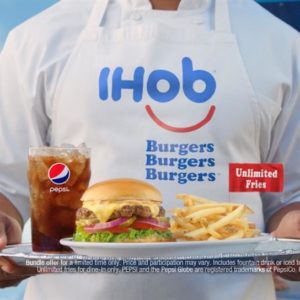Why are so many companies rebranding?

Over the past few years, I’ve been paying particular attention to companies that have rebranded. I’ve noticed some in the Silicon Slopes area, such as Workfront (from AtTask), Teem (from EventBoard) or Entrata (from Property Solutions). Nationally the last year brought us new rebrands, such as WW (from Weight Watchers) Geoffrey’s Toy Box (from Toys ‘R’ Us) and Dunkin’ (from Dunkin’ Donuts). Even the Library of Congress, one of the oldest institutions in the world, rebranded itself with a new logo.
Many of these rebrands have their champions and their detractors—some who believe the rebranding is precisely what the company needed, while others say it’s the worst idea ever. Many of the national rebrands listed above are among the top rebrands of 2018 or are on the list of worst rebrand ideas of the year.
One rebrand that was really a marketing stunt was the rebrand of IHOP to IHOb (changing the “P” for Pancakes to “b” for Burgers. The “Internet was outraged” at the change, but IHOb changed back to IHOP after a few weeks, doing the rebrand to announce a new line of burgers.
While some of these rebrands, especially logo rebrands, are obvious because of mergers or outdated terms or technology, I’ve often wondered why a company would take a seemingly great name and give up entirely on all of the money, time and effort put into that brand to basically start over with a new name and logo. What do you do with all of that brand equity? How do you build up new brand equity?
It wasn’t until I heard from Joe Staples, the former CMO of Workfront, talk about Workfront’s rebrand from AtTask. While I wasn’t a customer of the service, I thought AtTask seemed like a good brand with a name that clearly described what the company did—help you and your projects stay on task. Staples explained the reasons why a company would do a rebrand, and then how the company decides on the new brand. Here is a summary below from the company’s article, Anatomy of a Rebrand.
Six Reasons to Rebrand
- You’ve Outgrown Your Name. Companies evolve and change as they grow and serve new customers and markets. In AtTask’s instance, the company had extended its product offering to include the entire ecosystem of corporate work. It was more than managing your tasks.
- Your Name Has a Negative Association. Obviously, if your company has had a major crisis or a new negative connotation with customers, it’s time to change your brand. An example is Kentucky Fried Chicken changing to KFC.
- You’re Frequently Confused with Another Company. If you continually have to clarify your company as opposed to another company to potential customers, it may be time to change your brand.
- You’ve Been Carrying around a Bad Name for Years. If your company name means nothing to customers, even if you have a good reputation, then you may want to consider a name change to give your company more meaning.
- Your Name is Not Suitable for the Internet. A company with the name of Ford Owners may not want the URL fordowners.com, because it means other things than just Ford Owners.
- No One Can Remember It, Spell It or Say It. Chick-fil-A is a company that can get away with misspellings or a play on words, but most companies can’t. If they can’t say it or spell it, you need to change brands.
Workfront’s principles are a great guide on why you might want to rebrand your company. If you have more than one of these problems listed above, you should consider a rebrand. What are your favorite rebrands? Or ones you thought were the worst?
